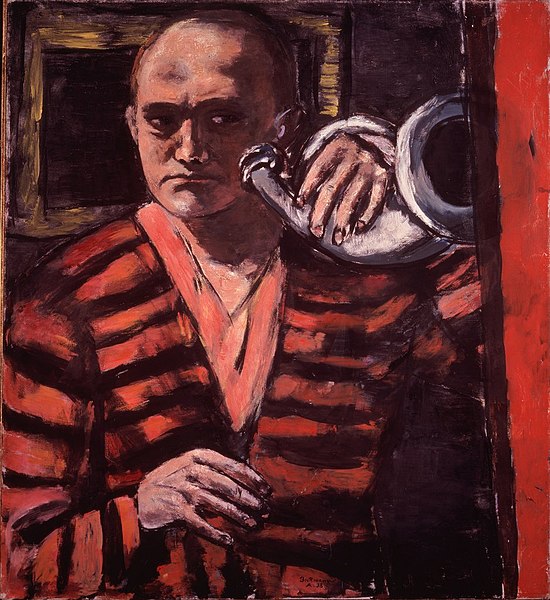Boston Expressionism is an arts movement marked by emotional directness, dark humor, social and spiritual themes, and a tendency toward figuration strong enough that Boston Figurative Expressionism is sometimes used as an alternate term to distinguish it from abstract expressionism, with which it overlapped.
"Christmas Tree" by Hyman Bloom, 1945
"Street Scene #2" by Jack Levine, 1938
"The Last Supper" by David Aronson, 1944
American Figurative Expressionism
American Figurative Expressionism is a 20th-century visual art style or movement that first took hold in Boston, and later spread throughout the United States. Critics dating back to the origins of Expressionism have often found it hard to define. One description, however, classifies it as a Humanist philosophy, since it is human-centered and rationalist. Its formal approach to the handling of paint and space is often considered a defining feature, too, as is its radical, rather than reactionary, commitment to the figure.
A detail from Ben Shahn's "The Passion of Sacco and Vanzetti" series, 1931-32.
Edvard Munch, The Scream, oil, tempera and pastel on cardboard, 1893, National Gallery, Oslo
Max Beckmann's Self-Portrait with Horn, oil on canvas, 1938.
Kandinsky's Der Blaue Reiter, painted in a style Kandinsky would reject within the decade, oil on canvas, 1903, Stiftung Sammlung E.G. Bührle, Zurich.







